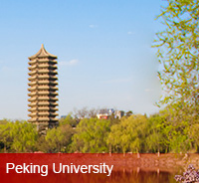Shandong Peninsula Urban Agglomeration on the Rise
Apr 15-2021
How many urban agglomerations are there in China? The answer varies from five to nine. It’s only in the most expansive range, i.e., nine, that Shandong Peninsula urban cluster enters the ranks. Yet it’s fully likely to take the No.4 position – after the Guangdong-Hong Kong-Macao Greater Bay Area, the Yangtze River Delta urban agglomeration, and the Beijing-Tianjin-Hebei city group – provided that it pulls off substantial development in the 14th Five-Year Plan period, writes Prof. Yu Miaojie in a media commentary. He’s the CCP Party Chief and Deputy Dean of the NSD.
Two advantages stand out for Shandong. Firstly, unlike other agglomerations which need to coordinate across provincial borders, the Shandong one is all within the same province and is thus better-positioned in resources integration and policy coordination and implementation. Secondly, it can provide an important driving force for what the top leadership promotes: high-quality development. The Shandong Peninsula urban agglomeration thus forms an integral part of the new development pattern, says Prof. Yu.
And it enjoys a myriad of comparative advantages. The peninsula is solidly rooted in opening up and has strong exports, while also possessing a vast market (7.3 trillion yuan in GDP in 2020, between that of Indonesia and Australia), a full range of industries (41 major industries), and abundant natural resources. Moreover, its superior geographical position earns it a critical role in the rollout of the free trade zone between China, Japan and South Korea. Further adding to its charm is its rich cultural traditions (being the birth place of Confucianism) and abundant human resources
There’s not without challenges. The two core cities, Jinan and Qingdao, only achieve an urban concentration rate of 26.2%, which means they still need to expand their spillover effects.
Overall, the Shandong Peninsula urban agglomeration can aim for two goals. For one, in the 14th Five-Year Plan period, it can build into a new plateau for opening up and forge a new pattern driven by bellwether corporations. Rather than just focusing on the Third Industry, it should continue to develop the Second Industry to avoid hollowing out. It should also cultivate leading companies that are comparable to Tencent and Alibaba. For the other, it should learn from the Guangdong-Hong Kong-Macao Greater Bay area to drive innovations by increasing R&D investment and luring high-end talents.







